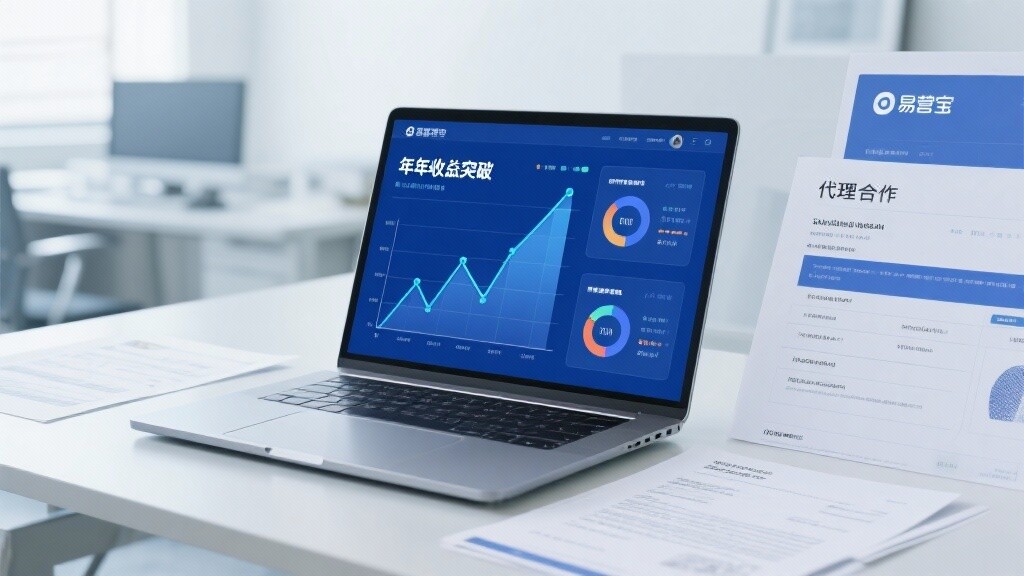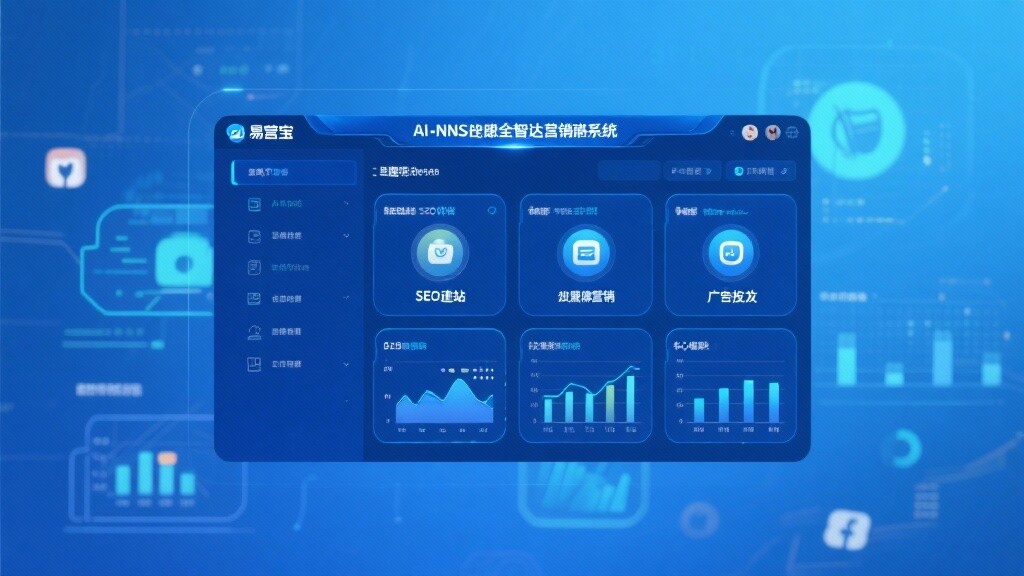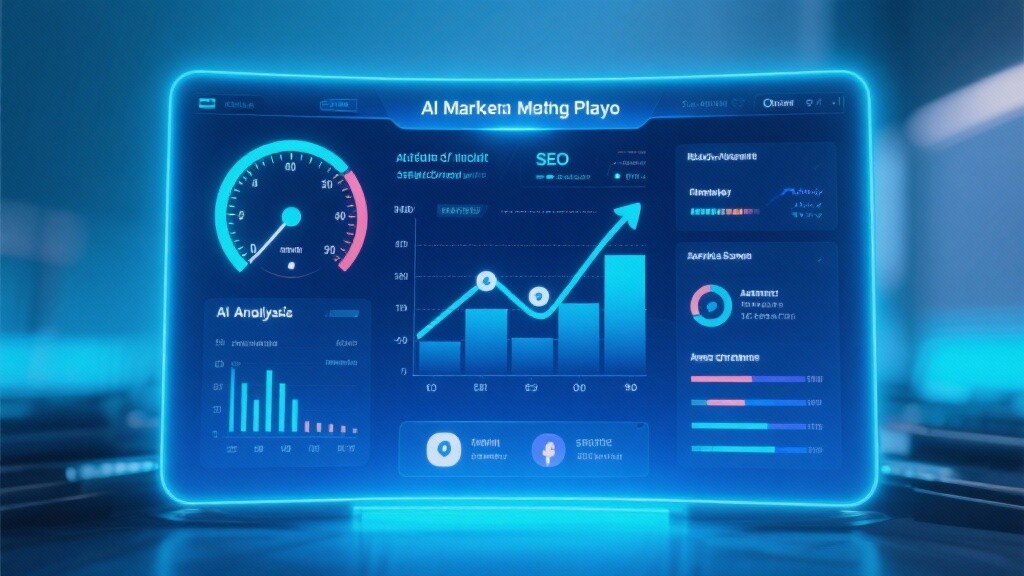Easy Operation Cloud Intelligent Website Marketing System Platform!
Definition of Website Traffic: The Fundamental Metric for Measuring Digital Asset Value and Customer Interaction
Website Traffic refers to the number of users visiting a specific website within a given time period and the page views they generate. It serves as a fundamental indicator for measuring a website's popularity, content relevance, and marketing efficiency.
Key Components of Website Traffic:
Users: The unique individual count visiting the website (typically identified via cookies or unique device IDs).
Sessions: A series of interactions initiated by a user on the website, starting from entry and ending upon departure or inactivity.
Page Views: The total number of pages viewed on the website (a single user can generate multiple page views in one session).
Bounce Rate: The percentage of sessions where users leave after viewing only one page, a critical metric for assessing traffic quality and page relevance.
The Essence of Website Traffic: The frequency and depth of interactions between potential customers and your brand's digital assets.
The Evolution of Website Traffic: From Technical Metrics to User Behavior Analysis
The tracking and analysis of website traffic reflect the internet's evolution from simple information display to complex business ecosystems.
1. Early Stage: Hits and Click-Through Rates (1990s-2000)
Focus: Early metrics centered on "hits"—total server requests (including images, files)—and simple page visit counts.
Limitations: Inability to distinguish real users from search engine crawlers, resulting in coarse data unsuitable for business decisions.
2. Introduction of Analytics Tools and User Metrics (2000-2010)
Technological Shift: The emergence of tools like Google Analytics (GA), introducing granular metrics such as users, sessions, and traffic sources.
Impact: Enabled businesses to systematically analyze user behavior, traffic sources, and conversion leaks.
3. Mobile, Multi-Channel, and Attribution Models (2010-2020)
Trend Driver: The rise of mobile devices shifted focus to cross-device, cross-channel user behavior.
Attribution Models: Introduced multi-touch attribution (e.g., first-click, last-click, linear) to fairly evaluate each channel's contribution to final conversions.
4. Privacy, AI, and the GA4 Era (2020-Present)
Challenge: Cookie tracking faces hurdles due to GDPR, CCPA, and browser restrictions.
Tech Upgrade: Google Analytics 4 (GA4) pivots to event-driven AI modeling, predicting user behavior and filling data gaps via machine learning.
Core Focus: Traffic analysis now emphasizes events and user lifetime value (LTV).
Technical Principles of Website Traffic: Tracking Code, Event Models, and Data Attribution
Accurate website traffic tracking relies on client-side code, server processing, and complex attribution algorithms.
1. Client-Side Tracking: Code and Event Models
Tracking Code: A JavaScript snippet (e.g., GA4 Tag) installed on the website. Loaded during page visits, it sends data packets to analytics servers.
Event-Driven: Modern analytics (e.g., GA4) use event models. Each interaction (e.g., button clicks, video plays, scrolling) is recorded as an "event", providing finer-grained behavioral data than page views.
2. Traffic Source Identification and Classification
Analytics tools classify traffic sources via HTTP Referrer headers:
Direct Traffic: Users entering URLs directly or via bookmarks (empty Referrer).
Organic Search: Referrers from search engines (e.g., Google, Baidu).
Paid Search: Referrers from search engines with tracking parameters (UTM or GCLID).
Social Traffic: Referrers from platforms (e.g., Facebook, LinkedIn).
Referral Traffic: Referrers from non-search website links.
3. Attribution Modeling
Principle: Determines how credit is assigned to touchpoints in a user's conversion path.
Common Models:
Last Click: Attributes 100% credit to the final interaction before conversion.
First Click: Attributes 100% credit to the first interaction.
Linear: Evenly distributes credit across all touchpoints.
Data-Driven: Uses AI and machine learning to assess each touchpoint's actual contribution, the most scientific model.
Core Features and Strategic Value Segmentation of Website Traffic

Website traffic is not a monolithic metric; its strategic value depends on source, quality, and user intent.
Traffic Quality and Intent Evaluation:
Traffic quality outweighs quantity. Quality is assessed via user intent and on-site behavior metrics:
High-Intent Traffic: Organic and paid search traffic where users exhibit clear goals (e.g., "buy," "download," "price").
High-Quality Behavior: Low bounce rates, high page dwell time, multiple page views.
Advanced Traffic Acquisition and Growth Strategy Deployment
Achieving sustained, high-quality traffic growth requires multi-channel, systematic strategic planning.
1. Search Engine Optimization (SEO): Building a Traffic Moat
Strategy: Focus on ranking for high-intent keywords. Optimize technical health (Core Web Vitals), create deep, high E-E-A-T content, and build quality backlinks.
Value: Establishes a sustainable, low-cost lead engine with compounding traffic value.
2. Content-Driven Traffic Growth
Strategy: Address customer pain points and search intent via topic clusters. Create blogs, guides, whitepapers to attract potential customers.
Value: Captures top-of-funnel (ToFu) prospects, building brand authority for future conversions.
3. Social and Paid Traffic Synergy
Strategy: Leverage Facebook/Meta Ads, TikTok for precise audience targeting and demand stimulation. Use paid traffic to rapidly test high-converting content and landing pages.
Value: Enables short-term traffic surges and seeds high-quality users for remarketing and lookalike audiences.
4. Email Marketing and Private Traffic Reactivation
Strategy: Build a robust email database. Use email campaigns to re-engage dormant users (e.g., new product launches, promotions), boosting direct traffic and brand loyalty.
Value: The lowest-cost, highest-converting traffic source, enhancing customer lifetime value (LTV).
5. Analytics Tools (GA4) Implementation
Strategy: Use Google Analytics 4 (GA4) to monitor in real-time all traffic sources' sessions, conversions, and ROI. Leverage GA4's data-driven attribution model to accurately assess each channel's true contribution.
Value: Ensures all traffic acquisition efforts are data-driven and goal-oriented.
EasyProfit: Your Expert in Website Traffic Acquisition, Analysis, and Growth
EasyProfit's website traffic services are systematic solutions based on multi-channel analytics, advanced SEO strategies, and conversion optimization. We transform your website traffic from "quantity" into "high-value assets."
Traffic Source Audit and Intent Analysis: Deep-dive into your current traffic composition, user intent, and conversion efficiency to identify undervalued channels.
High-Intent SEO Strategy Deployment: Focus on maximizing organic search traffic via E-E-A-T content and technical optimizations.
Cross-Channel Attribution and ROI Assessment: Implement GA4 and analytics tools to establish scientific attribution models, ensuring clear ROI for every traffic channel.
Traffic Quality Enhancement and CRO: Beyond volume growth, we optimize landing pages and A/B testing to boost conversion rates for existing traffic.
Choose EasyProfit to make your website traffic a predictable, scalable, and high-ROI engine for business growth.
FAQ
1. Why is "organic search traffic" considered the highest-quality traffic in website analytics?
Because it has the highest intent and the lowest long-term cost.
High Intent: Users actively input keywords, explicitly expressing demand for a product, service, or information. The conversion intent of this traffic far exceeds that of passively viewed social ads.
Low Cost: It is free traffic obtained through SEO optimization. Once rankings stabilize, it continues to flow in, with long-term marginal costs approaching zero.
2. What is the "attribution model," and why is it critical for business decisions?
The attribution model is the method to determine which marketing touchpoints contribute most to final conversions.
Importance: In complex customer journeys, users might first encounter your brand via social ads (first touchpoint), then learn about the product through SEO blogs (mid-funnel touchpoint), and finally complete the purchase via paid search (last touchpoint). Attribution models (especially data-driven models) scientifically allocate credit, preventing misallocation of budgets to channels that appear high-contributing (last-click) but are actually low-value (non-first-touch).
3. How to use website traffic data to assess brand awareness?
Focus primarily on "direct traffic" and "branded keyword search traffic".
Direct Traffic: Users directly input your brand URL, indicating they already know your brand, reflecting high loyalty.
Branded Keyword Searches: Users directly search for your brand or product names, showing established brand recognition. Steady growth in these metrics is a direct reflection of increased brand awareness.
4. Why does my website have high traffic but low conversion rates?
This is typically caused by mismatches between "traffic quality" and "user intent" or flaws in "website experience."
Low-Intent Traffic: If most traffic comes from low-intent entertainment social media or broad, irrelevant keywords, high volume doesn’t translate to purchase intent.
Poor Website Experience: Issues like slow loading speed (poor Core Web Vitals), confusing page design, or complex checkout flows lead to drop-offs at the final step (high bounce or cart abandonment rates). Use GA4 and heatmap tools for deep analysis and conversion rate optimization (CRO).

Customer Reviews
Mr. Han, CEO of a B2B Solutions Provider
"Our previous website had high traffic volume, but most was low-quality referral traffic with minimal inquiry conversions. The EasyWin team first helped us deploy a GA4 data-driven attribution model, identifying the true drivers of conversions—organic search and paid search traffic. Then, they fully aligned our SEO strategy with transactional keywords and high-intent long-tail keywords. Within 12 months, while total traffic grew only 30%, high-intent traffic surged , and inquiry conversion rates doubled. We finally transformed traffic into tangible business leads."
Ms. Wu, CMO of an Online Education Platform
"We faced challenges with high traffic costs and multi-channel attribution. EasyWin not only optimized our Facebook and Google ad campaigns but, more crucially, leveraged traffic analytics to refine the entire user journey. By analyzing GA4 funnel drop-offs, we identified severe leakage at the free trial registration stage. Website optimizations based on these insights directly drove a increase in trial signup conversions. They helped us realize: Traffic is the starting point; conversion is the destination."
 Decision-Makers' Essential Guide: Driving Annual Revenue Growth Through SaaS Reseller PartnershipsThis analysis explores four dimensions—market trends, reseller models, technological enablement, and case studies—to outline strategies for achieving revenue breakthroughs via SaaS reselling. It covers core applications including multilingual website development, AI website builder reseller programs, and self-operated foreign trade platforms, leveraging Easysoo's intelligent marketing platform and reseller ecosystem.
Decision-Makers' Essential Guide: Driving Annual Revenue Growth Through SaaS Reseller PartnershipsThis analysis explores four dimensions—market trends, reseller models, technological enablement, and case studies—to outline strategies for achieving revenue breakthroughs via SaaS reselling. It covers core applications including multilingual website development, AI website builder reseller programs, and self-operated foreign trade platforms, leveraging Easysoo's intelligent marketing platform and reseller ecosystem. EYB AI+SNS Social Media Fully Intelligent Marketing System Operation DemoThis article provides a detailed explanation of the operational process, core functionalities, and practical application cases of the EYB AI+SNS Social Media Fully Intelligent Marketing System, helping users understand how to leverage AI technology to enhance global digital marketing effectiveness.
EYB AI+SNS Social Media Fully Intelligent Marketing System Operation DemoThis article provides a detailed explanation of the operational process, core functionalities, and practical application cases of the EYB AI+SNS Social Media Fully Intelligent Marketing System, helping users understand how to leverage AI technology to enhance global digital marketing effectiveness. How to do independent website SEO? Follow these 6 steps to skyrocket your traffic!This article addresses the needs of enterprise decision-makers, providing a comprehensive methodology for independent website SEO optimization. It covers core modules such as technical optimization, content strategy, and speed enhancement, supported by real-world case studies and data.
How to do independent website SEO? Follow these 6 steps to skyrocket your traffic!This article addresses the needs of enterprise decision-makers, providing a comprehensive methodology for independent website SEO optimization. It covers core modules such as technical optimization, content strategy, and speed enhancement, supported by real-world case studies and data. AI Marketing Platform + Social Media Strategy = Traffic Explosion SecretsThis article explores in depth the combination of AI marketing platforms and social media strategies, offering comprehensive solutions such as intelligent website building, SEO optimization, and ad placements to boost global expansion for businesses.
AI Marketing Platform + Social Media Strategy = Traffic Explosion SecretsThis article explores in depth the combination of AI marketing platforms and social media strategies, offering comprehensive solutions such as intelligent website building, SEO optimization, and ad placements to boost global expansion for businesses.









